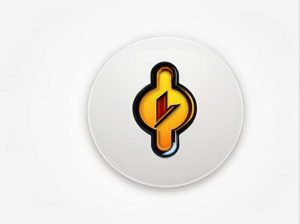Transistors are fundamental components in modern electronic devices, acting as switches or amplifiers in circuits. They are made up of different elements, each playing a crucial role in the device’s functionality. But have you ever wondered which element has the biggest size in a transistor? Understanding this can help in designing more efficient and powerful electronic components. we will explore the key elements of a transistor, identify the one with the largest size, and explain its significance in the transistor’s operation.
What Is a Transistor?
A transistor is a semiconductor device used to amplify or switch electronic signals and electrical power. It is composed of three main parts:
- Emitter Emits carriers (electrons or holes) into the base.
- Base Controls the flow of carriers from the emitter to the collector.
- Collector Collects carriers from the base and passes them to the external circuit.
Transistors come in different types, such as Bipolar Junction Transistors (BJT) and Field Effect Transistors (FET), but they all share the same basic structure. Understanding the size of each element is essential for optimizing performance and efficiency.
Key Elements in a Transistor
Before identifying the largest element, let’s understand the roles of each component in a transistor:
1. Emitter
The emitter is heavily doped to ensure high carrier concentration. Its primary function is to inject carriers into the base. Although it is crucial for the transistor’s operation, it is usually the smallest of the three elements to minimize the distance carriers must travel.
2. Base
The base is a thin, lightly doped layer situated between the emitter and collector. Its purpose is to control the flow of carriers between the emitter and collector. The base is kept thin to allow for efficient charge carrier diffusion, which enhances the transistor’s switching speed.
3. Collector
The collector is designed to collect carriers from the base and pass them to the external circuit. It is moderately doped and has a larger physical size compared to the emitter and base. This is because the collector needs to dissipate more heat and handle a higher voltage, requiring a larger surface area.
Which Element Has the Biggest Size in a Transistor?
The Collector is the element with the biggest size in a transistor. This is true for both Bipolar Junction Transistors (BJT) and Field Effect Transistors (FET). The reasons for the collector’s large size are as follows:
- Heat Dissipation The collector is responsible for handling most of the power dissipation. A larger size allows for better heat dissipation, preventing damage from overheating.
- Voltage Handling The collector must withstand high voltage levels, especially in power transistors. A larger area ensures better insulation and reduces the risk of breakdown.
- Current Flow The collector collects a large number of carriers, requiring more surface area to maintain efficient current flow.
Why Is the Collector Larger Than the Emitter and Base?
The design of a transistor is optimized for performance, reliability, and efficiency. The collector’s larger size serves several critical purposes:
- Efficient Heat Management: Since the collector handles the maximum power dissipation, a larger area allows for efficient heat spreading, which increases the transistor’s lifespan and stability.
- High Voltage Capability: The collector needs to sustain high voltages without breakdown. A larger size reduces the electric field strength, ensuring safe operation under high voltage conditions.
- Enhanced Current Capacity: To handle higher current levels without significant resistance, the collector is made larger. This is especially important in power transistors used in amplifiers and switching circuits.
In contrast, the emitter is kept smaller to maximize carrier injection efficiency, and the base is thin to facilitate quick carrier movement, enhancing the transistor’s switching speed.
Impact of Collector Size on Transistor Performance
The size of the collector directly influences the performance and characteristics of a transistor. Here’s how:
-
Power Dissipation and Thermal Stability
A larger collector improves power dissipation, ensuring thermal stability even under high power operations. This makes it ideal for power transistors used in amplifiers and voltage regulators. -
Breakdown Voltage
The larger size of the collector enhances its breakdown voltage capacity. This allows the transistor to operate safely at high voltages, making it suitable for power supply circuits and switching applications. -
Current Handling Capability
With a bigger surface area, the collector can handle higher current densities without overheating. This is crucial for high-power applications where large currents flow through the transistor. -
Efficiency and Reliability
The optimized size of the collector ensures efficient current flow and minimizes power loss, leading to higher efficiency and reliable operation.
Examples of Transistors with Large Collectors
Several types of transistors have particularly large collectors to meet specific performance requirements:
- Power Transistors: Used in power amplifiers and voltage regulators, these transistors have a large collector to handle high voltage and current levels.
- High-Frequency Transistors: In RF applications, a larger collector helps manage heat dissipation and maintain stability at high frequencies.
- Switching Transistors: For fast switching operations in digital circuits, the collector is designed to be large enough to handle quick current changes without overheating.
Design Considerations for Collectors in Transistors
When designing transistors, engineers must carefully consider the size and structure of the collector to optimize performance:
- Material Selection: High thermal conductivity materials like silicon carbide (SiC) are used to enhance heat dissipation.
- Doping Levels: Moderate doping is applied to the collector to balance current flow and voltage handling capabilities.
- Layout Design: The collector’s layout is designed to maximize surface area while minimizing resistance and enhancing heat dissipation.
These design considerations ensure that the collector can efficiently manage power dissipation, voltage handling, and current capacity.
the collector is the element with the biggest size in a transistor. Its large size is crucial for efficient heat dissipation, high voltage handling, and increased current capacity. This design choice enhances the transistor’s performance, efficiency, and reliability, making it suitable for a wide range of applications, from power amplifiers to high-speed switching circuits.
Understanding the significance of the collector’s size is essential for engineers and designers who aim to create efficient electronic devices. By optimizing the collector’s size and structure, transistors can deliver exceptional performance while maintaining thermal stability and durability.
As technology continues to evolve, advancements in semiconductor materials and transistor design will further enhance the efficiency and power handling capabilities of the collector, paving the way for more powerful and compact electronic devices.



